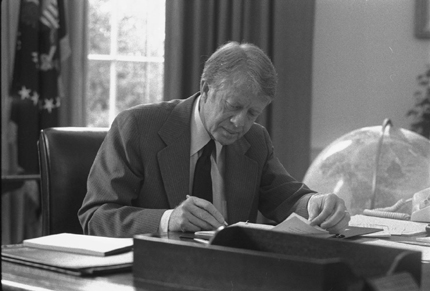History
 On December 12, 1977, President Carter issued Executive Order 12028, which consolidated the administrative functions of ten entities of the Executive Office of the President into the Office of Administration. In an excerpt from that Executive Order, President Carter defined OA's mission statement and role:
On December 12, 1977, President Carter issued Executive Order 12028, which consolidated the administrative functions of ten entities of the Executive Office of the President into the Office of Administration. In an excerpt from that Executive Order, President Carter defined OA's mission statement and role:
Sec. 3 (a) The Office of the Administration shall provide common administrative support and services to all units within the Executive Office of the President, except for such services provided primarily in direct support of the President. The Office of the Administration shall, upon request, assist the White House Office in performing its role of providing those administrative services, which are primarily in direct support of the President.
(b) The common administrative support and services provided by the Office of Administration shall encompass all types of administrative support and services that may be used by, or useful to, units within the Executive Office of the President. Such services and support shall include, but not be limited to, providing support services in the following administrative areas:
- Personnel management services, including equal employment opportunity programs;
- Financial management services;
- Data processing, including support and services;
- Library, records and information services;
- Office services and operations, including mail, messenger, printing and duplication, graphics, word processing, procurement, and supply services; and
- Any other administrative support or service, which will achieve financial savings and increase efficiency through centralization of the supporting service.
In 2000, the Chief Financial Officer and Federal Financial Report Act was extended to include the EOP, establishing a Chief Financial Officer whose role is to:
"...oversee all financial management activities relating to the programs and operations of the EOP... complete, reliable, consistent, and timely information…and the development and reporting of cost information."
Today, OA has more than 200 professionals who provide a vast spectrum of support services, from modernizing Presidential technology to recruiting a 21st century workforce.
